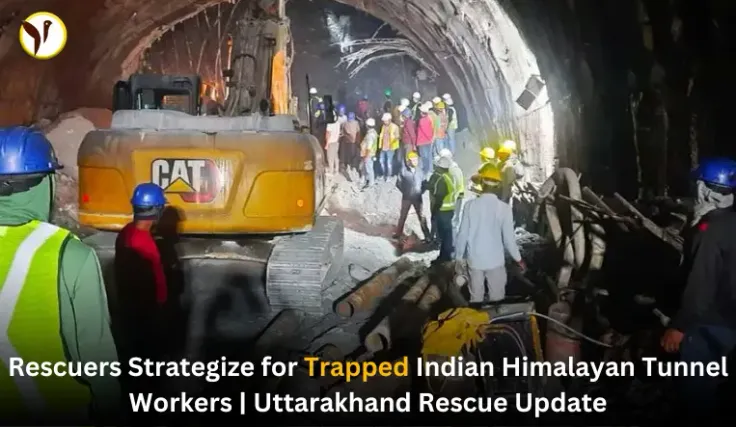Rescue operations continue in Uttarakhand, India, as efforts persist to reach and assist 41 workers trapped for over a week in a collapsed tunnel in the Indian Himalayas. Authorities are pursuing alternative rescue strategies after initial attempts faced setbacks, officials disclosed on Monday.
Since the tunnel collapse on November 12, the workers have remained confined but secure within the structure, equipped with essential supplies such as oxygen, dry food, water, and medicines delivered through a pipeline. A new initiative involves drilling a second pipeline, about 60 meters long, to provide cooked food to the trapped individuals. Presently, 42 meters of this pipeline have been completed, according to Bhaskar Khulbe, an officer overseeing the tunnel project.
"The primary objective is the safety and rescue of the 41 individuals within the tunnel. This pipeline will facilitate the delivery of necessary supplies to them," stated Nitin Gadkari, the federal Road Transport Minister, addressing reporters on Sunday.
Also read: Mira Murati Named Interim CEO of OpenAI: Leadership Shift and Continuity Explained
In addition to food delivery, authorities are contemplating the installation of an optical fiber connection through the pipeline. This setup aims to establish communication for the workers to connect with their families or enable the insertion of a camera into the tunnel.
Currently, the trapped workers receive dry food items like nuts, puffed rice, and chickpeas via the pipeline. However, three individuals have reported suffering from dysentery, as confirmed by R.C.S. Panwar, the district chief medical officer.
Following a halt in the horizontal drilling operation due to technical issues and concerns about a sudden "cracking sound," rescue teams are considering five new strategies. One of these involves vertical drilling from the mountain's top, a process anticipated to commence by Tuesday as specialized machinery is awaited, informed Jasvant Kapoor, a general manager at SJVN, a state-run company actively participating in the rescue mission.
Also read: Indian Himalayas Tunnel Collapse: Rescue Efforts Continue Amidst Machine Setback
The cause of the tunnel's collapse, spanning 4.5 kilometers (approximately 3 miles), remains undisclosed by authorities. Nonetheless, the region is known for its susceptibility to natural disasters like landslides, earthquakes, and floods.
During the collapse, around 50 to 60 workers were on the night shift, and those situated closer to the tunnel exit managed to escape onto the national highway, part of the Char Dham Hindu pilgrimage route.
Also read: OpenAI, creator of ChatGPT, terminates CEO Sam Altman in a surprising move







